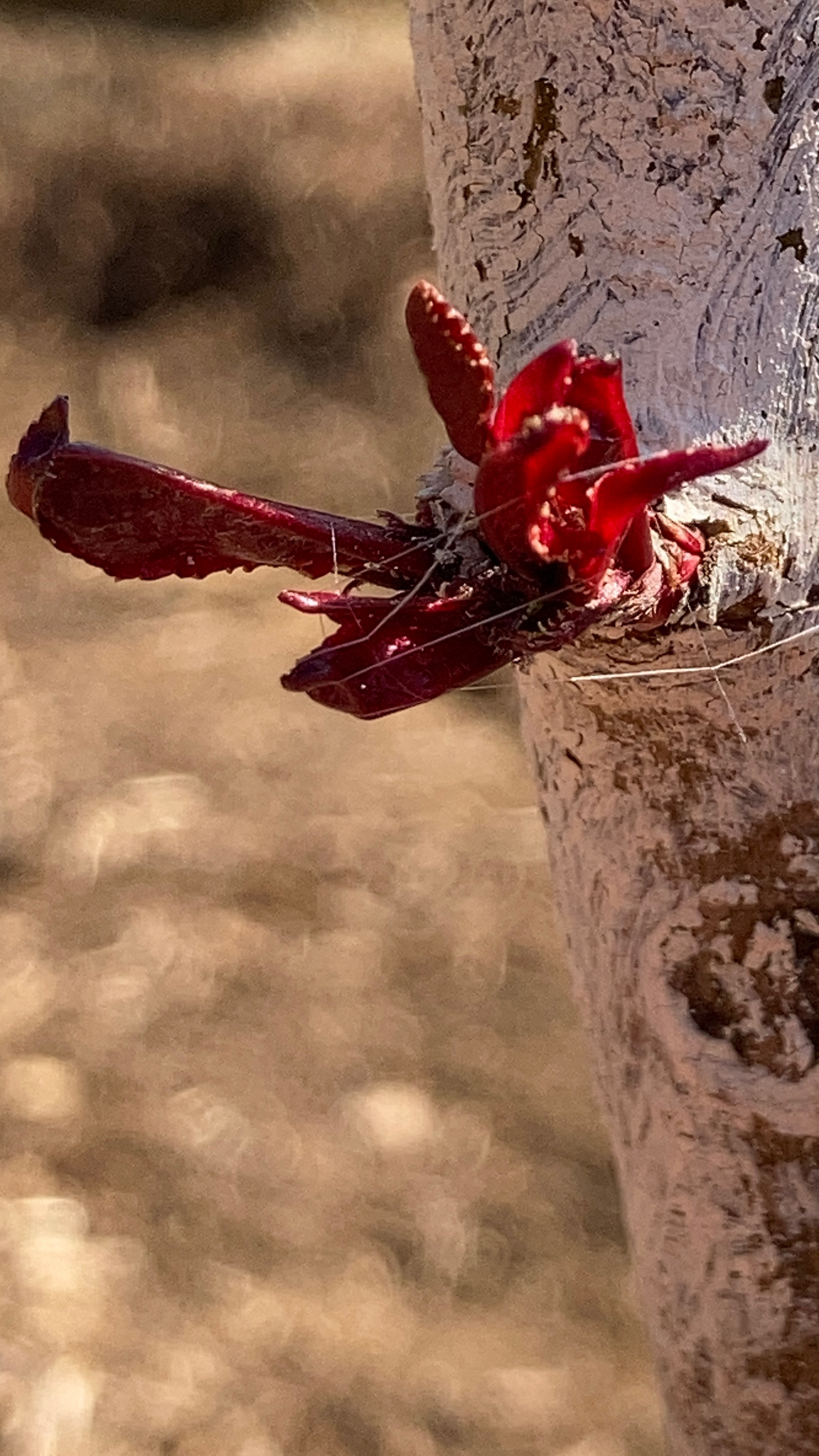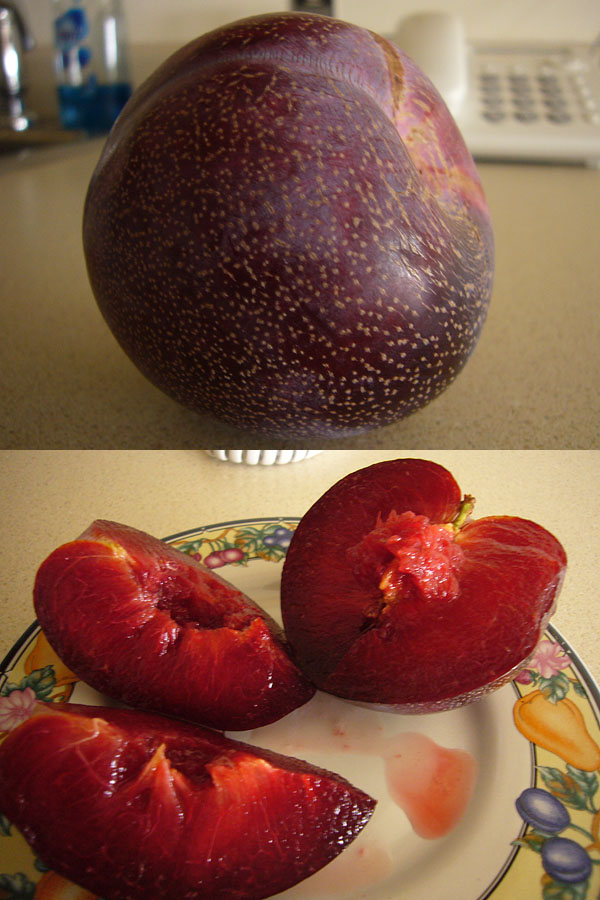|
Nectaplum
A nectaplum (interspecific nectarine) is a tradename for varieties that are a hybrid of nectarines The peach (''Prunus persica'') is a deciduous tree first domesticated and cultivated in Zhejiang province of Eastern China. It bears edible juicy fruits with various characteristics, most called peaches and others (the glossy-skinned, no ... and plums developed by Floyd Zaiger. Both nectarine and plum traits are easily detectable. It sprouts from an ornamental tree which makes it popular for home gardening, but is not large in the commercial market. The fruit's exterior has smooth skin closely resembling a nectarine. Nectaplums are noted for their sweetness (due to a very high sugar content) and their intense flavor. Varieties There is currently only one marketed variety of this type of fruit. *Spice Zee - Slightly acidic, loaded with sugar. White flesh, and reddish-grey skin. Harvests in middle to late July. See also * Peacotum * Plumcot, Apriplum, Pluot, or Apri ... [...More Info...] [...Related Items...] OR: [Wikipedia] [Google] [Baidu] |
Nectaplum
A nectaplum (interspecific nectarine) is a tradename for varieties that are a hybrid of nectarines The peach (''Prunus persica'') is a deciduous tree first domesticated and cultivated in Zhejiang province of Eastern China. It bears edible juicy fruits with various characteristics, most called peaches and others (the glossy-skinned, no ... and plums developed by Floyd Zaiger. Both nectarine and plum traits are easily detectable. It sprouts from an ornamental tree which makes it popular for home gardening, but is not large in the commercial market. The fruit's exterior has smooth skin closely resembling a nectarine. Nectaplums are noted for their sweetness (due to a very high sugar content) and their intense flavor. Varieties There is currently only one marketed variety of this type of fruit. *Spice Zee - Slightly acidic, loaded with sugar. White flesh, and reddish-grey skin. Harvests in middle to late July. See also * Peacotum * Plumcot, Apriplum, Pluot, or Apri ... [...More Info...] [...Related Items...] OR: [Wikipedia] [Google] [Baidu] |
Peacotum
A peacotum is a peach/ apricot/ plum hybrid developed by Zaiger's Genetics, Inc., a company that develops novel fruit through hybridization. Peacotum is trademarked by Dave Wilson Nursery Inc. An application to trademark the name nectacotum in the United States for varieties derived from nectarine-type peaches was made in 2004 but later abandoned. See also * Nectaplum *Pluot Pluots, apriums, apriplums, plumcots or pluclots are some of the hybrids between different ''Prunus'' species that are also called interspecific plums. Whereas plumcots and apriplums are first-generation hybrids between a plum parent ('' P. salic ... References Hybrid prunus {{Fruit-stub ... [...More Info...] [...Related Items...] OR: [Wikipedia] [Google] [Baidu] |
Plumcot, Apriplum, Pluot, Or Aprium
Pluots, apriums, apriplums, plumcots or pluclots are some of the hybrids between different ''Prunus'' species that are also called interspecific plums. Whereas plumcots and apriplums are first-generation hybrids between a plum parent ('' P. salicina'') and an apricot (''P. armeniaca''), pluots and apriums are later-generations. Both names "plumcot" and "apriplum" have been used for trees derived from a plum seed parent, and are therefore equivalent. Plumcots and apriplums Natural plumcots (also called apriplums) have been known for hundreds of years from regions of the world that grow both plums and apricots from seed. The name ''plumcot'' was coined by Luther Burbank. The plumcot tree can reproduce asexually by budding whereas the apriplum tree resulted from hybridized seedlings and cannot reproduce. Pluots Pluots are later generations of complex hybrid between the Japanese plum, ''Prunus salicina'' (providing the greater amount of parentage), and the apricot, ''Prunus armen ... [...More Info...] [...Related Items...] OR: [Wikipedia] [Google] [Baidu] |
Nectarines
The peach (''Prunus persica'') is a deciduous tree first domesticated and cultivated in Zhejiang province of Eastern China. It bears edible juicy fruits with various characteristics, most called peaches and others (the glossy-skinned, non-fuzzy varieties), nectarines. The specific name ''persica'' refers to its widespread cultivation in Persia (modern-day Iran), from where it was transplanted to Europe. It belongs to the genus ''Prunus'', which includes the cherry, apricot, almond, and plum, in the rose family. The peach is classified with the almond in the subgenus ''Amygdalus'', distinguished from the other subgenera by the corrugated seed shell (endocarp). Due to their close relatedness, the kernel of a peach stone tastes remarkably similar to almond, and peach stones are often used to make a cheap version of marzipan, known as persipan. Peaches and nectarines are the same species, though they are regarded commercially as different fruits. The skin of nectarines lacks the ... [...More Info...] [...Related Items...] OR: [Wikipedia] [Google] [Baidu] |
Plums
A plum is a fruit of some species in ''Prunus'' subg. ''Prunus''''.'' Dried plums are called prunes. History Plums may have been one of the first fruits domesticated by humans. Three of the most abundantly cultivated species are not found in the wild, only around human settlements: ''Prunus domestica'' has been traced to East European and Caucasian mountains, while ''Prunus salicina'' and '' Prunus simonii'' originated in China. Plum remains have been found in Neolithic age archaeological sites along with olives, grapes and figs. According to Ken Albala, plums originated in Iran. They were brought to Britain from Asia. An article on plum tree cultivation in Andalusia (southern Spain) appears in Ibn al-'Awwam's 12th-century agricultural work, ''Book on Agriculture''. Etymology and names The name plum derived from Old English ''plume'' "plum, plum tree", borrowed from Germanic or Middle Dutch, derived from Latin ' and ultimately from Ancient Greek ''proumnon'', itself belie ... [...More Info...] [...Related Items...] OR: [Wikipedia] [Google] [Baidu] |
Floyd Zaiger
Chris "Floyd" Zaiger (April 26, 1926 – June 2, 2020) was a fruit breeder particularly known for hybrid development of stone fruit and numerous plant patents. Zaiger founded Zaiger's Genetics, a fruit-breeding business in Modesto, California, which is now an international business selling cultivars and hybrids. Zaiger developed varieties such as the pluot, and has been called "the most prolific stone fruit breeder in the modern era." Early life and education Chris Floyd Zaiger was born to Christian Fredrick Zaiger and Anna Marie Zaiger on April 26, 1926 in Kennard, Nebraska. The family moved to Iowa and then Oregon, before coming to California's San Joaquin Valley. He attended school until eighth grade and worked as a migrant strawberry picker. During World War II, he was drafted into the U.S. Army where he served as a paratrooper in the 11th Airborne Division. Zaiger earned a degree in plant pathology and agricultural education in 1952 from the University of California, Davis ... [...More Info...] [...Related Items...] OR: [Wikipedia] [Google] [Baidu] |
Edible Fruits
An edible item is any item that is safe for humans to eat. "Edible" is differentiated from "eatable" because it does not indicate how an item tastes, only whether it is fit to be eaten. Nonpoisonous items found in nature – such as some mushrooms, insects, seaweed, and so forth – are referred to as edible. Processed items that normally are not ingested but are specially manufactured to be so, like edible underwear or edible packaging, are also labeled as edible. Edible items in nature It is estimated that approximately half of about 400,000 plant species on earth are edible, yet ''Homo sapiens'' consume only about 200 plant species, because these are the simplest to domesticate. Edible plants found in nature include certain types of mushrooms, flowers, seeds, berries, seaweed, and cacti. Being able to identify the versions of these plants that are safe to eat is an important survival skill. Many animals are also edible, including domesticated livestock as well as wild insec ... [...More Info...] [...Related Items...] OR: [Wikipedia] [Google] [Baidu] |




